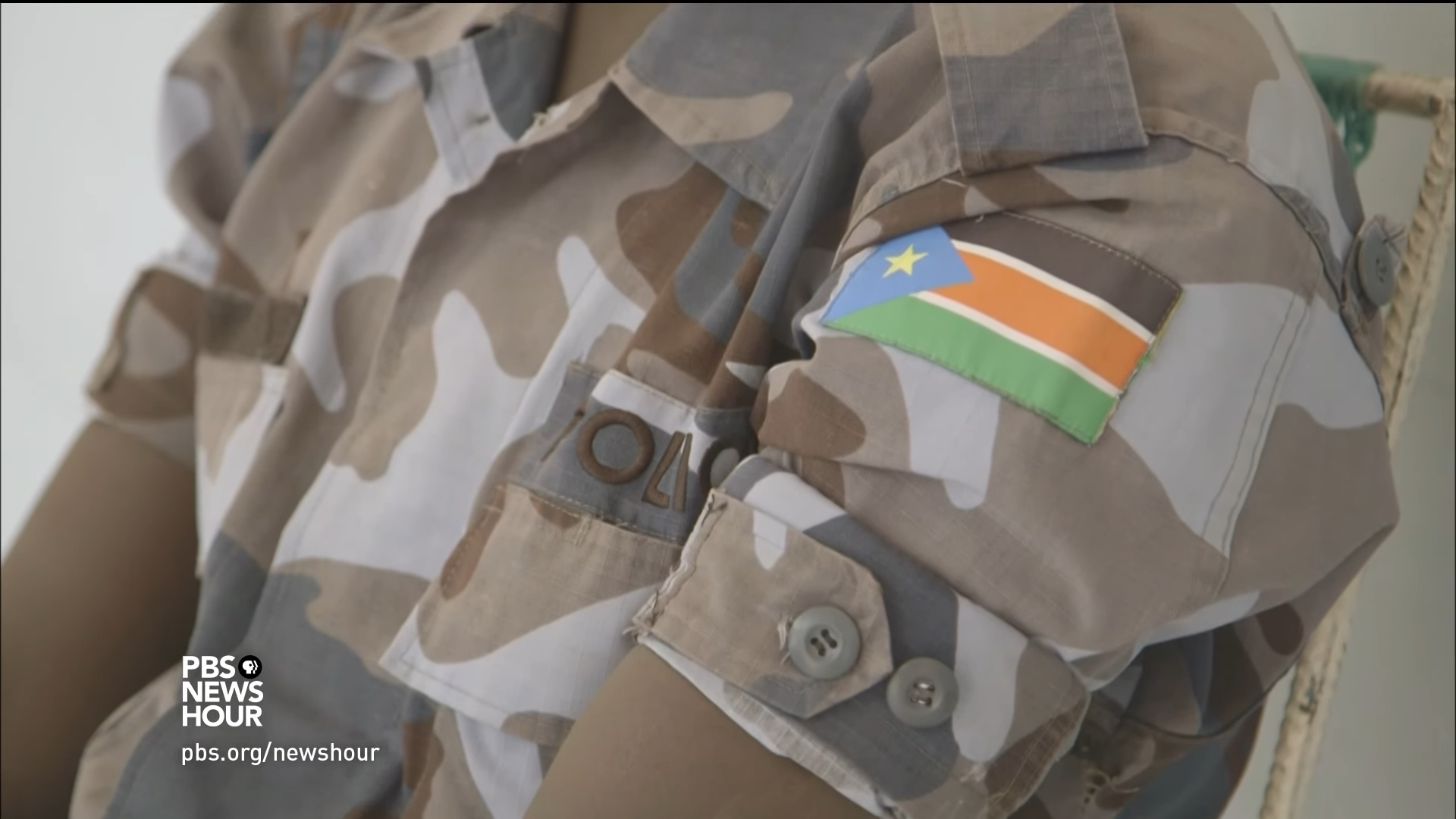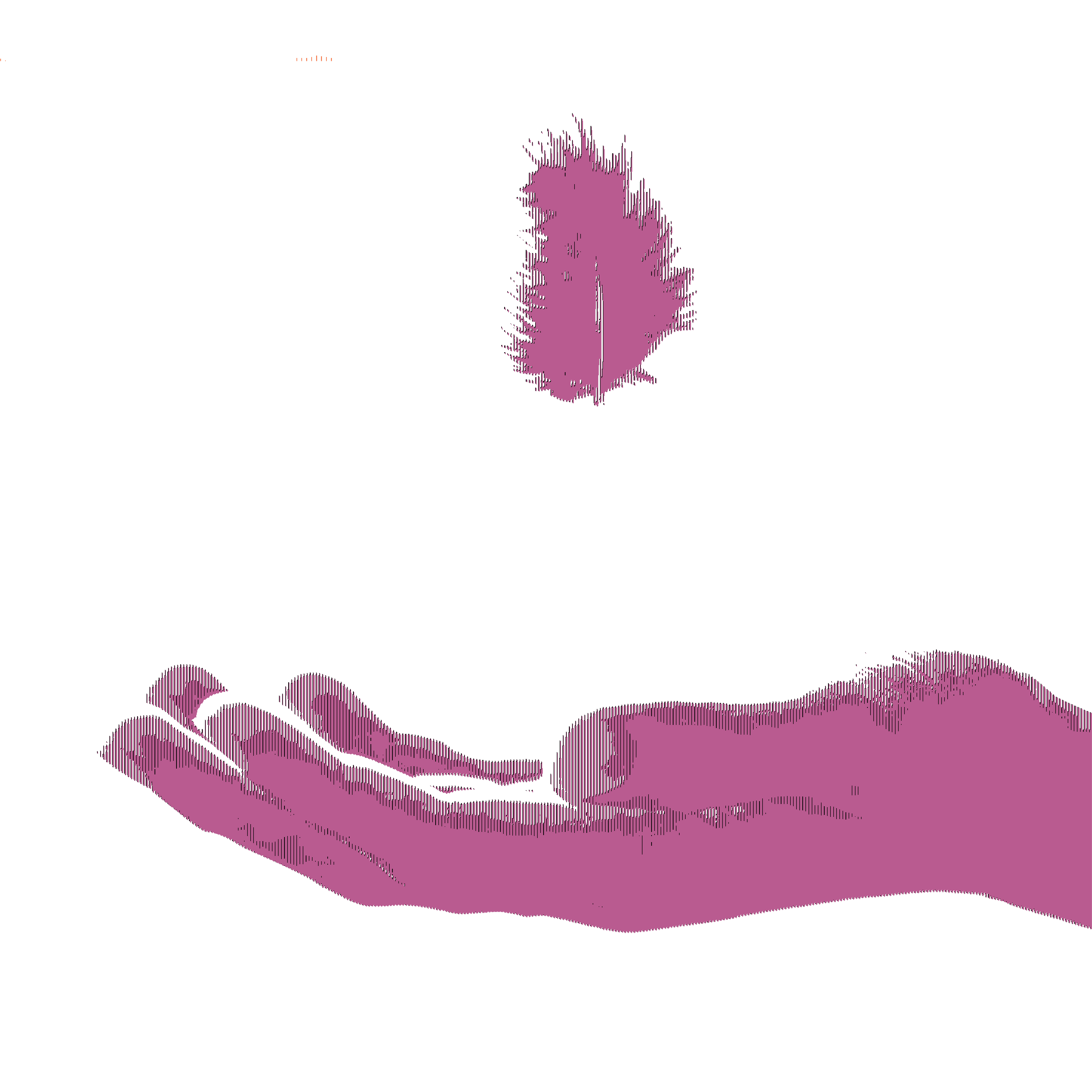
LEER, South Sudan—When war came to 15-year-old Rebecca Riak Chol’s small town in rural South Sudan in early April, she and 27 other villagers fled into nearby marshlands to hide. They spent two grueling weeks slowly making their way to the relative safety of a region controlled by rebels from her same tribe. They were constantly hungry, constantly thirsty, and constantly in danger of being killed by the troops trying to hunt them down. Chol’s sister died along the way, but it wasn’t because she was found and shot. Instead, she — like growing numbers of South Sudanese — died from starvation.
“We didn’t have anything to dig with to bury her, so we just put grass on the body and left it there,” Chol told me during a conversation in the schoolyard of her new home in the small town of Thoahnom Payam. Two school buildings with mud walls and tin roofs flanked the dry dirt yard. In the center was an unused volleyball net.
One of Chol’s classmates, 16-year-old Marco Nuer, arrived here in February from a different violence-ravaged part of the country. Like Chol, he paid an enormous price: His father, brother, and sister starved to death along the way. He and his mother were the only ones to survive.
The two stories are tragically common in South Sudan, which is facing mass hunger on a scale unimaginable in almost every other part of the world. In February, the United Nations estimated that 100,000 South Sudanese were starving, and that 5 million more — 42 percent of the country’s population — have such limited access to proper food that they don’t know where their next meal is coming from. More recent figures are not available yet, but aid agencies fear the situation could be much worse now.
There are two things you need to understand about the famine decimating South Sudan, the world’s newest country and one that came into existence largely because of enormous assistance from the US.
First, South Sudan isn’t the only country in the region facing mass starvation. A potentially historic famine is also threatening Nigeria, Somalia, and Yemen. Far from Western eyes and far from the headlines, an estimated 20 million people in those four countries are at risk of dying due to a lack of food.
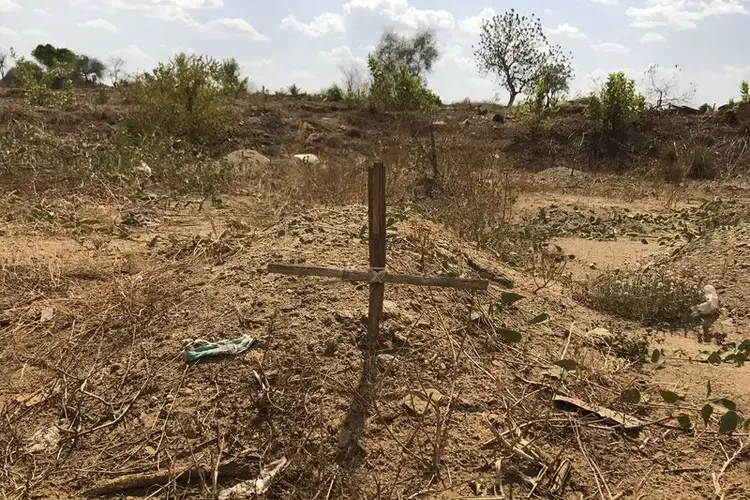
The UN has already officially declared a full-fledged famine in parts of South Sudan and warned that the other three countries will suffer mass death from food and water shortages if “prompt and sustained humanitarian intervention” doesn’t happen soon.
Second, these famines weren’t caused by natural disasters like crop failures or droughts. They were man-made — the direct result of the bloody wars and insurgencies raging in all four countries.
The upshot is that the current famines, unlike others in recent history, could have potentially been prevented.
Washington, which has been slow to act, seems to finally be taking steps to help fight the famine. The Trump administration proposed massive funding cuts to America’s humanitarian food aid, but Congress rejected those cuts and instead allocated close to $1 billion in new funding.
In a recent interview with Vox, Michael Bowers, the vice president of humanitarian leadership and response for the aid group Mercy Corps, said the current famine was “entirely avoidable.”
“It’s entirely a man-made construct right now, and that means we have it within our power to stop that,” he said. “Wars are hard to stop; famines are not.”
On the ground here in South Sudan, the civil war that has left millions on the brink of starvation shows no signs of ending anytime soon. And that means the numbers of men, women, and children dying from lack of food will continue to increase into the indefinite future.
In the intensive care unit of an International Medical Corps hospital in the capital city of Juba, the beds are occupied by the tiny, skeletal frames of malnourished children. The building is a simple temporary structure made of cinderblocks and plywood. Although children under 5 years old are the most vulnerable to malnutrition and the infections it can cause in small bodies, they are also incredibly resilient and almost always bounce back if fed high-calorie foods and given proper medicine.
The problem is that huge numbers of South Sudanese children aren’t getting that type of food. Many, in fact, aren’t getting food of any kind.
Most famines are caused by nature. These are caused by war.
Many American adults first learned about the very idea of an African famine in 1985, when Lionel Richie and Michael Jackson brought together some of the biggest stars in rock and pop music to record a song called “We Are the World.” It was part of an effort to raise money to fight a famine that killed a million people in Ethiopia between 1983 and 1985.
The song — which also included stars like Stevie Wonder, Paul Simon, Tina Turner, Bruce Springsteen, and Willie Nelson — eventually sold an astounding 20 million copies and raised more than $10 million for relief caused largely by a devastating drought in the impoverished country.
The crisis in the 1980s pales in comparison to the famine happening today. Because it isn’t just happening in one country; it’s happening in four.
Take Nigeria, where a bloody insurgency by the Islamist extremist group Boko Haram has created a growing humanitarian disaster. Since the group declared war on the country’s central government in 2009, millions of civilians — including huge numbers of farmers — have been forced from their homes to escape the group’s campaign of suicide bombings and kidnappings. With the agricultural systems of hard-hit areas in near collapse because of the fighting, the UN estimates that at least 4.8 million people are in need of urgent food assistance.
Somalia, long synonymous with civil war and hunger, risks suffering its second famine of the past five years alone. The UN says that more than 6 million Somalis — fully half the country’s population — need food aid.
The problem is that the government of Somalia doesn’t control huge swaths of the country. Much of it is still run by the Islamist militant group al-Shabaab. The ongoing conflict between the government in Mogadishu and the al-Qaeda-aligned group has devastated the economy and made it far harder to bring aid into the country.
But it’s Yemen, where 7 million people are facing starvation, that’s perhaps the clearest illustration of how war is directly causing famine. The Arab world’s poorest country, Yemen has suffered from food shortages for years, but a war between the Saudi-backed government in exile and the Iranian-backed Houthi rebels who control much of the north of the country has brought food shipments into Yemen to a grinding halt.
With US assistance, Saudi warplanes have destroyed bridges, roads, factories, farms, food trucks, animals, water infrastructure, and agricultural banks across the north, while imposing a blockade on the territory. For a country heavily dependent on foreign food aid, that means starving the people.
Coastal communities on the Red Sea are particularly hard hit, with fishermen unable to go out in their boats due to the risk of being bombed from above. In remote mountainous villages inland, whatever food makes it in is so expensive that many people cannot afford to buy it. The lifeline for aid getting into Yemen is Hudaydah port on the Red Sea, which is controlled by the Houthi rebels. Saudi Arabia bombed it in August 2015.
In early May, the head of a leading European aid agency described being “shocked to the bone” after a visit to Yemen.
“This is a gigantic failure of international diplomacy,” Jan Egeland, the secretary general of the Norwegian Refugee Council, said in a statement. “Men with guns and power inside Yemen as well as in regional and international capitals are undermining every effort to avert an entirely preventable famine, as well as the collapse of health and education services for millions of children. Nowhere on earth are as many lives at risk.”
Except, perhaps, for South Sudan.
The world’s youngest country is being ripped apart by war and starvation
South Sudan was born into aching poverty. After decades of civil war and neglect, the country finally gained its independence from the North in 2011, in large part due to the active assistance of the Obama administration and many of Washington’s key allies.
Early on, hopes that the fledgling country might finally begin to emerge from the depths of deprivation ran high. Then–US Ambassador to the UN Susan Rice delivered a speech in Juba at the ceremony marking the formation of the state. “The Republic of South Sudan is being born amid great hopes — the hope that you will guarantee the rights of all citizens, shelter the vulnerable, and bring prosperity to all corners of your land,” she told the hundreds of thousands in attendance.
But that optimism may have been misplaced. There are just 200 kilometers of paved roads in a country the size of France, making it difficult for farmers to sell their crops and buy new seeds. Food shortages have haunted rural communities for some time, and cattle raiding — where armed men steal entire herds from nearby villages and towns — is a regular occurrence.
Even if a South Sudanese family owned cattle and had planted crops, all of that would soon disappear when war came to their doorstep. Plants would die because farmers fled and never returned. Animals would be stolen or left to starve or die from dehydration.
Food shortages and acute hunger may have been almost inevitable for a country that had had trouble feeding itself even in the relative moments of calm before the current storm.
That storm erupted in 2013, when the country’s president, Salva Kiir, and his vice president, Riek Machar, went to war. Kiir accused Machar of a coup attempt, which Machar denied. In reality, the split was caused by a toxic mixture of decades of deep resentment over tribal differences heightened during the previous civil war, and a fear that the country’s oil resources would not be fairly divided. Kiir, who is from the dominant Dinka tribe, controlled the country’s armed forces. Machar, from the minority Nuer group, controlled a loose network of tribal militias. Both sides have been accused of war crimes, and more than 50,000 are estimated to have died in the fighting.
In recent months, government troops have been conducting “counterinsurgency” efforts in areas where the people are Nuer or from other tribes considered supportive of the rebels. The government says it’s a necessary part of any effort to contain militants and end the fighting; most of the world sees it as the collective punishment of civilians.
“Without civilians, those fighters won’t have a place to stay, receive food, receive popular support,” Jonathan Pedneault of Human Rights Watch told me. “So the aim by targeting civilians is meant to cut the grass under the feet of those fighters.”
That includes chasing people away from the very thing their lives depend on—food.
Rebecca Chol and her classmate Marco Nuer saw that punishment up close. Their families lived in one of the areas most heavily targeted by the current military campaign. When the fighting got closer to their hometowns, both fled, with little food or water and no way of finding more.
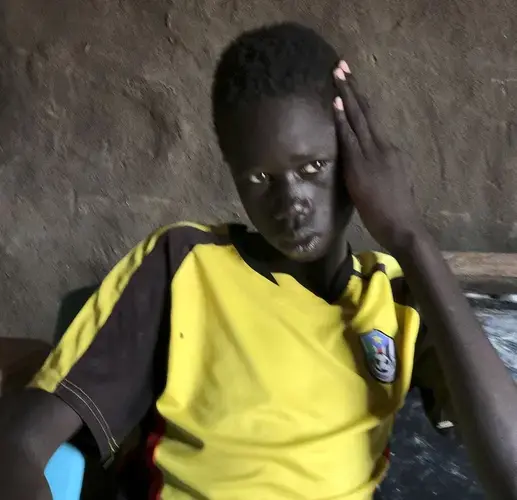
Like many of their friends and relatives, Chol and Nuer escaped into the enormous marshes that flank the White Nile river, which provide places to hide from troops who are unable to access the area by truck or car. But that safety can come at a huge cost: There is nothing to eat there, so people who survive attacks by gunmen end up perishing slowly from hunger.
The village of Thoahnom Payam, where we met Chol and Nuer, is only accessible by traditional dugout canoes, which glide silently between the tall reeds as small, colorful birds fly overhead. It’s a remarkably beautiful landscape, with only a few clues of the chaos in the air. The occasional group of rebel fighters float by, crouched into floating hollow logs, their long legs around their ears, AK-47s in hand.
Water lily roots are the only thing people in the marshes have to eat. The town Chol and her surviving relatives now call home lacks enough food to feed all the refugees. Instead, she and her family are still trying to survive based on what they can scavenge in the marshes.
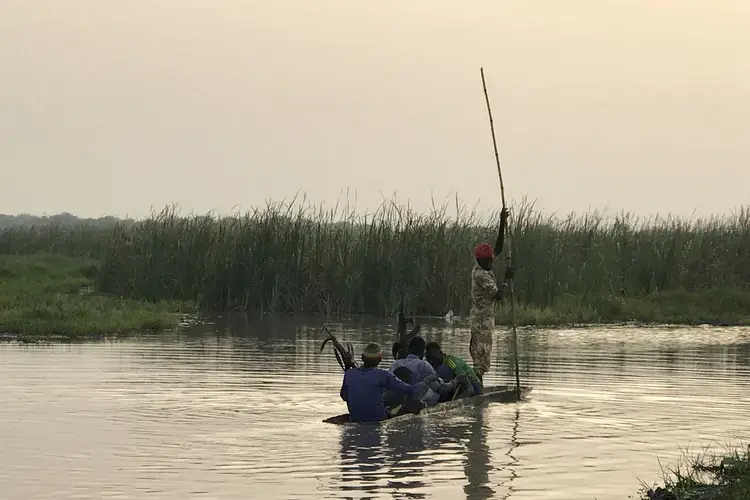
On a searing hot day in mid-April, Chol’s mother, Tipasa, took me down to a nearby swamp to forage for something for dinner. Bent over with her arms and legs deep in the muddy waters, she pulled up lilies like weeds and ripped off their small, stumpy roots. She collected the lily roots in a plastic container so they could be soaked before being eaten. They were bumpy black nubs, the size of daffodil bulbs. They looked inedible.
Chol’s family may soon get better stuff to eat. It’s relatively peaceful in the town, and Western aid agencies are operating in the nearby village of Ganyiel. At the center of the rebel-held town is a market place where stalls sell tea and some dried fish from the local rivers. A dirt landing strip nearby receives UN helicopters. Here, international aid agencies have some of their most crucial, and remote, outposts. It seems like only a matter of time until food shipments start arriving in Thoahnom Payam, just 30 minutes away by canoe.
Back in Leer, where Marco Nuer came from, things are much worse. The town, occupied by government troops, is destroyed and abandoned. The only building intact is a green steel church, empty of any furniture, with the door hanging off. The main street of shops and stalls has been razed to the ground, with sheets of steel scattered about in the grass and rusting vehicles lining the side of the main dirt road.
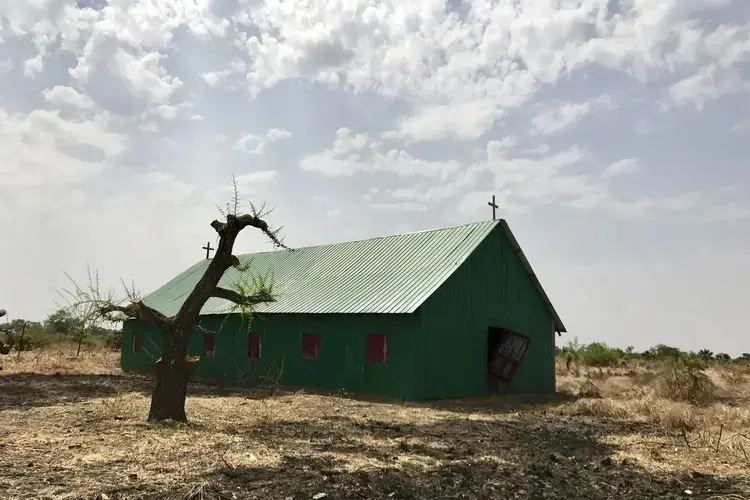
A few miles down that road is rebel-held land. It is a parched, open space with some trees and shrubs scattered around. The heat from the midday sun is unbearable. A few hundred people — originally residents of Leer and the surrounding villages — had crept out of hiding as news spread of a food drop by an aid plane. All of these people had left family members in the marshes, waiting anxiously for them to bring back the food. These thin, tired people were the strongest and most capable of making the journey.
They waited with remarkable patience, sitting silently under trees as bags of maize, recently dropped from a plane circling above, were piled up by volunteers wearing International Committee of the Red Cross (ICRC) bibs.
“Life in the swamps is terrible, because when the soldiers come you have to go to the river and hide in the water,” said Mary Nayiel. She was waiting under a tree for some help.
“You sit, in the water like this for up to 12 hours,” she told me, crouching down on the ground. She had six children starving in the marshes, waiting for her to return with food.
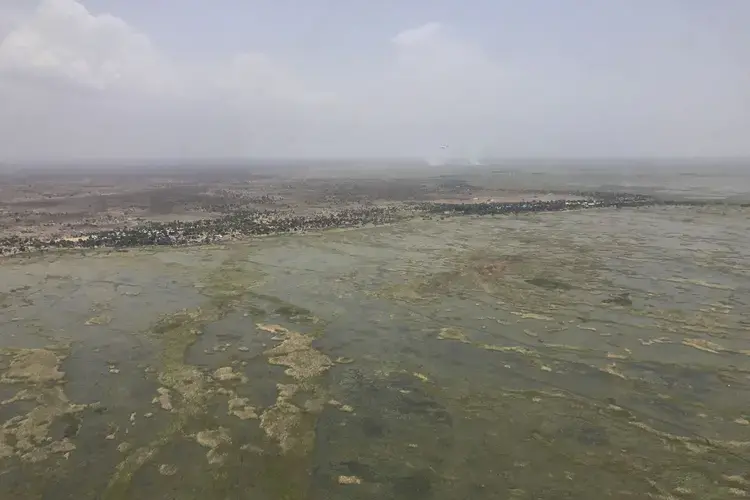
Nayiel and the other women sitting with her were waiting to be given seeds and tools to plant them with. The ICRC handed out hoes and axes as well as maize seeds to grow some crops in rebel-held land outside the swamps. If they planted before the rains came, then they could harvest in August. Many of the people sitting near me will die long before the crops are ready to eat.
Scott Doucet of the ICRC was overseeing the handouts nearby. Before the war, he said, the region was capable of feeding itself.
“There were a lot of cattle and livestock in this area,” he told me, standing next to a crowd of people sitting in line on the ground. “They were farmers, there was commerce, there was a market here where I am standing right now. All of this is gone now.”
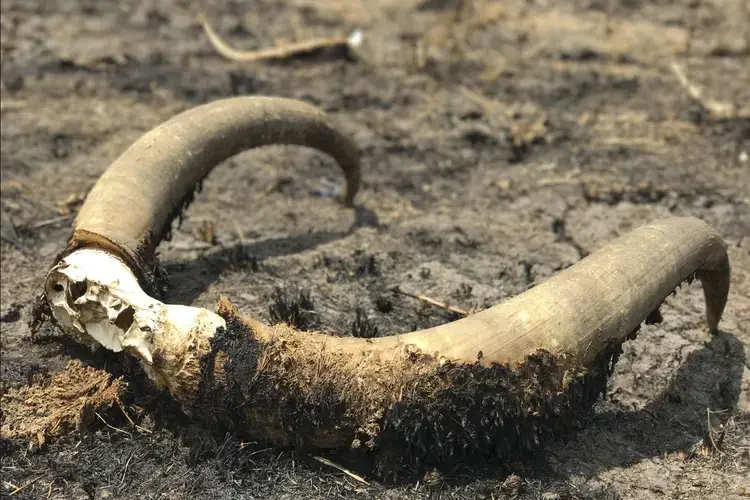
The charred remains of shops and stalls were still clear under our feet. A few ashy stumps showed where some of the sturdier shop buildings had been. A few hundred yards away, several huge cattle horns lay on the parched soil. The idea of having meat to eat here seemed farcical now.
Government soldiers had burned down the small market when they had taken the area earlier in the conflict. Now villagers who once bought and sold food here are being kept alive with charitable handouts. The town wasn’t always starving. It got that way because of war.
For those fleeing war, hunger can seem like an affordable price to pay for safety
It would take truly horrific violence for South Sudanese parents to flee into the marshes given the very real — and in some ways likely — chances of watching their children starve to death there. But that kind of horrific violence, unfortunately, is part of daily life in many parts of the country.
Ruot Machar was standing with a group of older men in the area where ICRC was handing out aid, some leaning on their spears — a reminder of the feeble defense civilians in this country have against well-armed government or rebel troops. Most of them had the deep horizontal scars of the Nuer tribe markings across their foreheads.
“War and hunger are the two dangers in our lives now because they are killing children in the war and the hunger is killing us also,” he said. “Both of these things are so dangerous for us.”
“I don’t know why the government is doing this,” he added. “We are their people.”
With no real international efforts underway to wind down the war, the most fortunate of South Sudan’s starving people are the ones who have reached camps run by the United Nations, where Western aid agencies are providing food, shelter, and medical facilities. The organizations are keeping hundreds of thousands of people alive; the problem is that millions more live in remote areas of this vast country that the aid groups simply can’t get to. The aid workers themselves are also increasingly at risk.
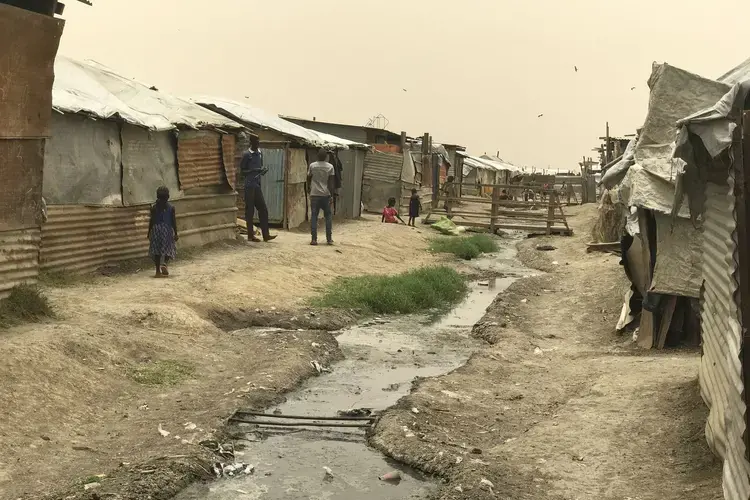
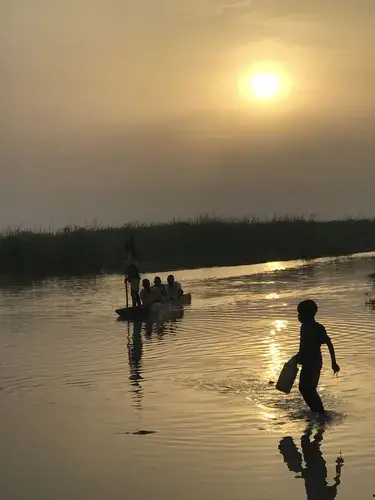
South Sudan is heavily dependent on foreign aid, but it has quickly become the most dangerous place in the world for humanitarian workers. More than 80 aid workers — mostly South Sudanese — have been killed since the conflict began. Female foreign aid workers were gang-raped by rampaging government soldiers who stormed a hotel in Juba during last July’s violence in the capital.
While I was in the country in April, three South Sudanese employees of the UN’s World Food Program were violently murdered in the western city of Wau. The WFP said they were trying to get to the warehouse during an outbreak of violence but were killed along the way. Two died of machete wounds, and another was shot.
“Looting is a huge problem,” said the country director of one Western charity. “Every time we have to pull out of an area, entire stocks of food and supplies are taken.”
Charities have been forced by the government to leave areas where their help is needed. In Leer, access has been granted again by the government, but it’s patchy. There used to be compounds and warehouses for some aid agencies there, but they were all burned down during the fighting.
International aid agencies in South Sudan are in a tough position. Caught between an increasingly belligerent and threatening government and the more than 5 million people on the brink of starvation, they are trying to keep people alive without openly condemning the government for their part in starving them in the first place. If they do, they risk being kicked out of the country.
At least one agency, while helping journalists get crucial access to cover the famine, was forced to gently request we keep their name out of our reports if we do focus very tightly on the war, and not simply the hunger. They know both are connected, but run the risk of being accused by the government of bringing reporters to places where they can do what Kiir’s regime considers to be “negative” stories about it.
On February 20, just days after the UN officially declared that South Sudan was in the midst of a famine, the government in Juba shocked the world by announcing a hike in visa prices for aid workers — from $100 to $10,000. That hasn’t been implemented, but it’s a stark reminder to aid agencies that their relationship with the government is increasingly shaky.
South Sudan is trying to cover up the scope of the disaster. It won’t work.
Journalists are also struggling to gain access to the country as the government hopes to control the image of the hunger crisis and steer the rhetoric away from it being war-driven.
Once inside, intimidation is rife. In nearly 10 years of reporting from conflict zones, I have never worked in an environment where government intimidation is so strong. My cameraman was arrested and detained at a police station for filming a long gas line, and I was detained with him on another occasion while filming some cows. Plainclothes police are on every street corner in Juba, and race towards foreign reporters as soon as they spot them, refusing to recognize the government-issued accreditation they have been issued.
The government shut Al Jazeera English’s bureau in Juba on May 2 after objecting to a story where a reporter interviewed Machar’s rebels, and an American NPR reporter was detained for several days after being arrested at his hotel in the capital by security forces.
For South Sudanese journalists, it’s even worse: They’ve faced a violent campaign against them since the beginning of the war. In August 2015, President Kiir said publicly, “The freedom of press does not mean that you work against your country. And if anybody among them does not know this country has killed people, we will demonstrate it one day on them.” Three days later, a reporter working for the independent New Nation paper was shot dead in the street.
The government of South Sudan will not realistically be able to stop the news of its famine, nor the fact that it was entirely man-made, from being reported. But we’re rapidly approaching the point of no return: Without an immediate and sustained effort to end the violence ravaging South Sudan and the other three nations, the world will for the first time in living memory be faced with four simultaneous famines.
The worst humanitarian disaster since World War II will have been one that was caused by, and therefore could have been prevented by, humans.


